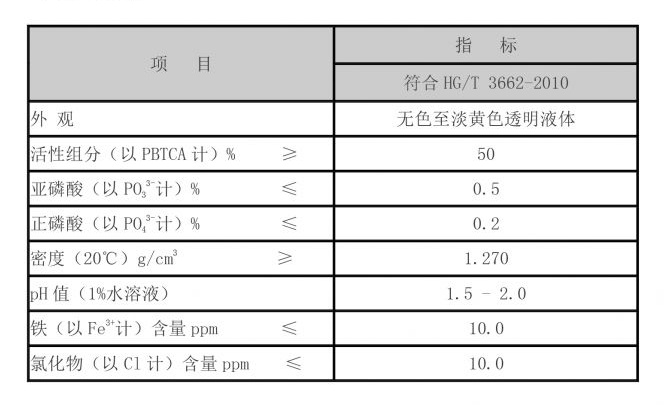ethylenediaminetetra methylenephosphonic acid
The Significance of Ethylenediaminetetra(methylenephosphonic) Acid in Modern Chemistry
Ethylenediaminetetra(methylenephosphonic) acid (EDTMPA) is a highly versatile phosphonic acid known for its unique structural properties and wide-ranging applications across various fields of chemistry and industrial processes. This compound, characterized by its ability to chelate metal ions, plays a crucial role in water treatment, detergents, biomedical applications, and corrosion inhibition, making it a significant molecule in both research and practical applications.
Chemical Structure and Properties
EDTMPA is an organic compound that features four methylenephosphonic acid groups attached to an ethylenediamine backbone. Its chemical formula can be represented as C8H20N2O12P4, indicating the presence of multiple functional groups that enable coordination with metal ions. The phosphonic acid moieties within its structure exhibit strong acidic properties, providing high stability in various pH conditions. This stability is further enhanced by the presence of nitrogen atoms, allowing the compound to function as an effective chelator.
Applications in Water Treatment
One of the most prominent applications of EDTMPA is in the field of water treatment. Due to its phosphonic acid groups, it can effectively sequester calcium, magnesium, and other metal ions that contribute to water hardness. By binding these ions, EDTMPA prevents scale formation in pipes and boilers, improving the overall efficiency of water systems. The ability to control scale and deposition is especially crucial in industrial settings where water is used in cooling systems, leading to significant cost savings and reduced maintenance.
Role in Detergents and Cleaning Agents
EDTMPA is also a key component in various detergents and cleaning agents. As a chelating agent, it enhances the effectiveness of surfactants by binding metal ions that can interfere with the cleaning process. For instance, in laundry detergents, EDTMPA helps to soften water by removing hardness ions, thereby allowing detergents to perform more efficiently. This action not only improves stain removal but also prolongs the lifespan of washing machines by reducing scale buildup.
ethylenediaminetetra methylenephosphonic acid

Biomedical Applications
In the biomedical field, EDTMPA demonstrates exceptional potential as a therapeutic agent. Its strong chelating ability allows it to bind to metal ions, which can be beneficial in various medical treatments, particularly in detoxifying heavy metals from the human body. Research has shown that phosphonic acids can be utilized in the targeted delivery of drugs and imaging agents, making EDTMPA a candidate for further exploration in drug design and development. Moreover, its applications extend to radiopharmaceuticals, where it serves as a ligand for the labeling of isotopes important in medical diagnostics.
Corrosion Inhibition
Corrosion, a significant issue in various industries, can lead to substantial economic losses. EDTMPA has been studied for its efficacy as a corrosion inhibitor for metals in aggressive environments. By forming stable complexes with metal ions, it reduces the rate of corrosion, allowing for safer and more durable materials in construction and manufacturing. The ability to inhibit corrosion is particularly vital in industries such as oil and gas, where metal exposure to harsh chemicals and extreme conditions is frequent.
Environmental Considerations
As with many chemical substances, the environmental impact of EDTMPA must be taken into account. It is essential to evaluate the biodegradability and ecotoxicity of phosphonic acids to ensure that their use in industrial applications does not lead to adverse environmental effects. Ongoing research focuses on developing greener alternatives and improving the sustainability of phosphonic acid-based compounds.
Conclusion
Ethylenediaminetetra(methylenephosphonic) acid has emerged as a vital compound in modern chemistry, bridging various industries with its unique properties. From water treatment to biomedical applications and corrosion inhibition, EDTMPA showcases the versatility and importance of phosphonic acids in everyday life. As research continues to uncover new applications and improve the environmental profile of these compounds, EDTMPA is poised to remain a key player in advancing both scientific and industrial practices. The continued exploration of its capabilities will undoubtedly lead to further innovations and enhanced efficiencies across multiple sectors.
-
2 Phosphonobutane 1 2 4 Tricarboxylic Acid (PBTCA) – Superior Scale InhibitorNewsSep.01,2025
-
2 Phosphonobutane 1,2,4 Tricarboxylic Acid (PBTCA): Superior Scale & Corrosion InhibitorNewsAug.31,2025
-
Dodecyldimethylbenzylammonium Chloride: High-Purity DisinfectantNewsAug.30,2025
-
2-Phosphonobutane-1,2,4-Tricarboxylic Acid: Scale & CorrosionNewsAug.29,2025
-
Premium Isothiazolinones | Broad-Spectrum Biocidal SolutionsNewsAug.28,2025
-
LK-319 Special Scale And Corrosion Inhibitor For Steel Plants: Advanced Solutions for Industrial Water SystemsNewsAug.22,2025





